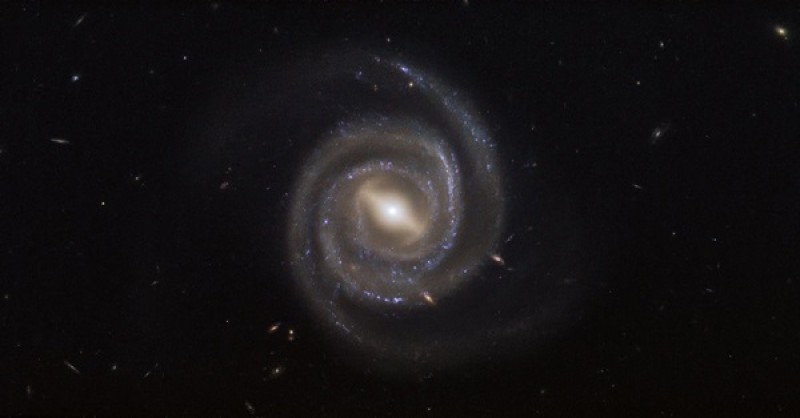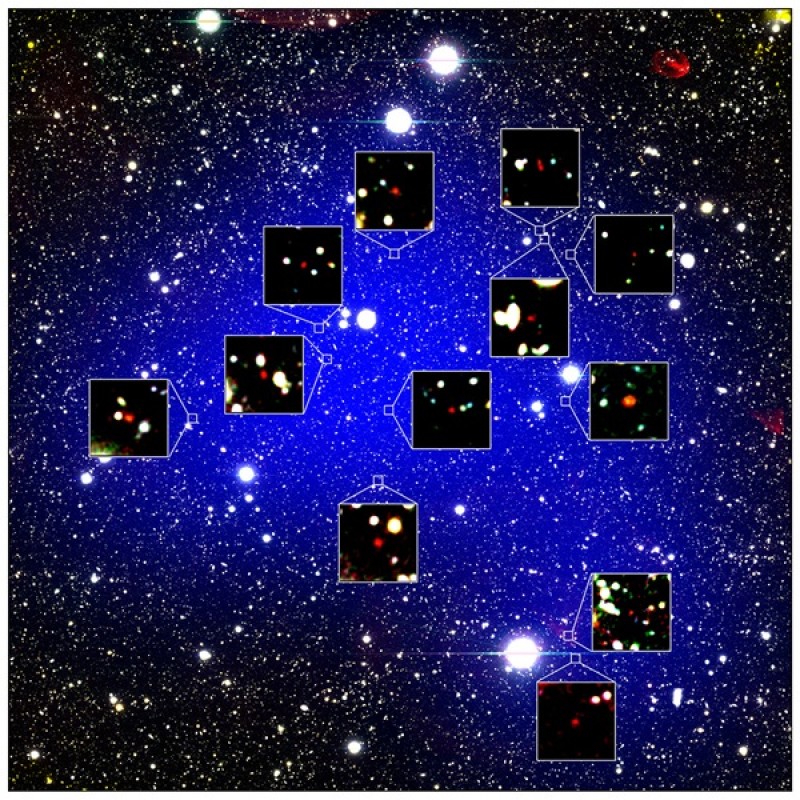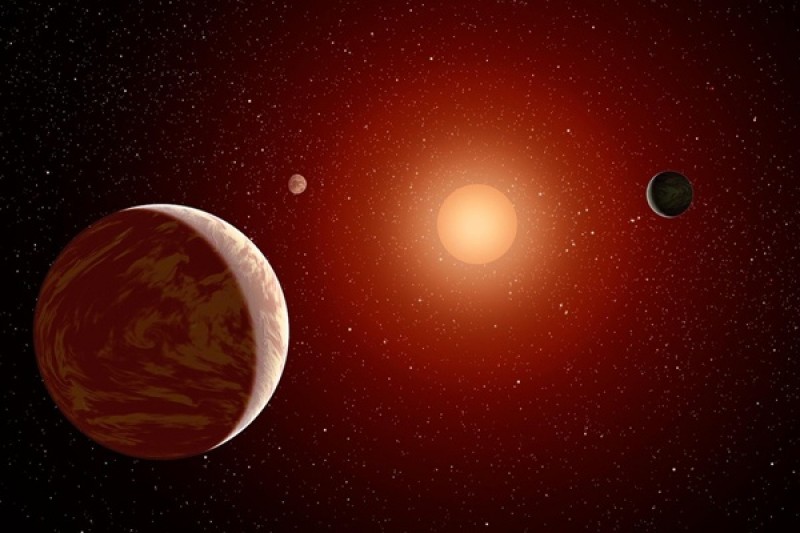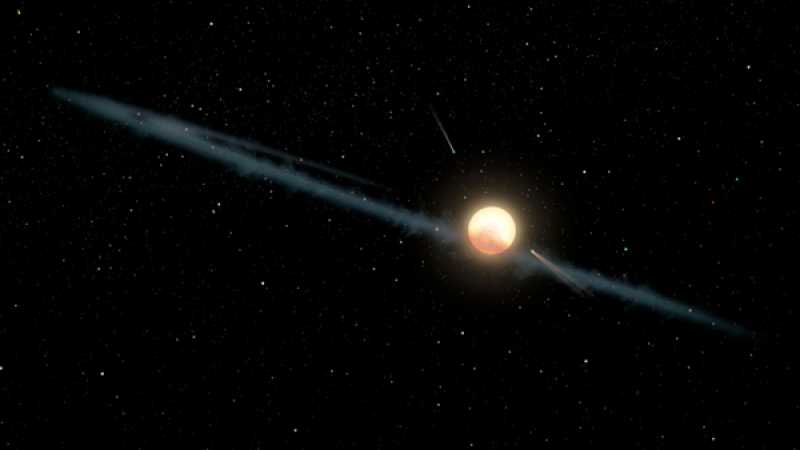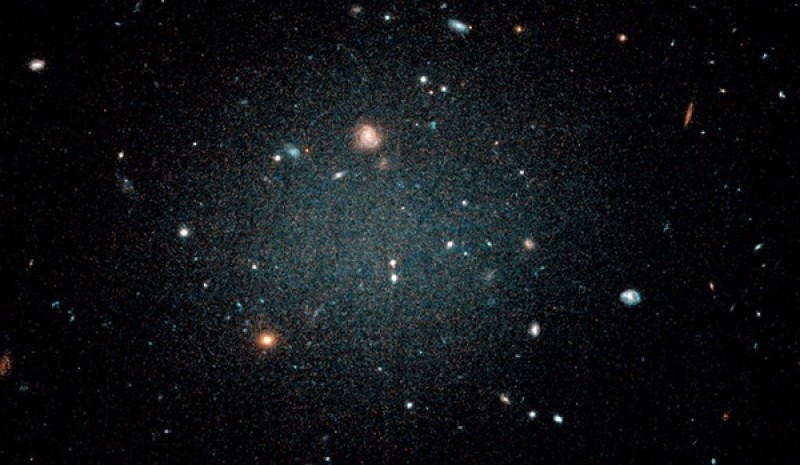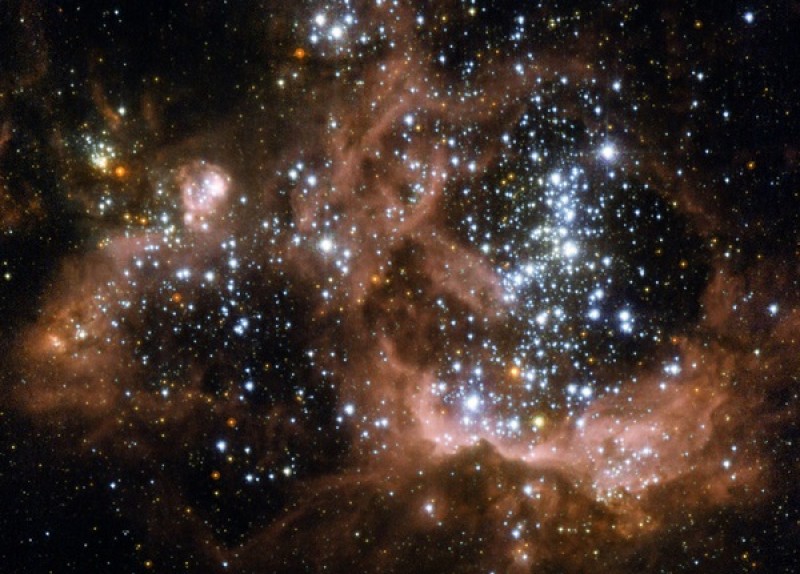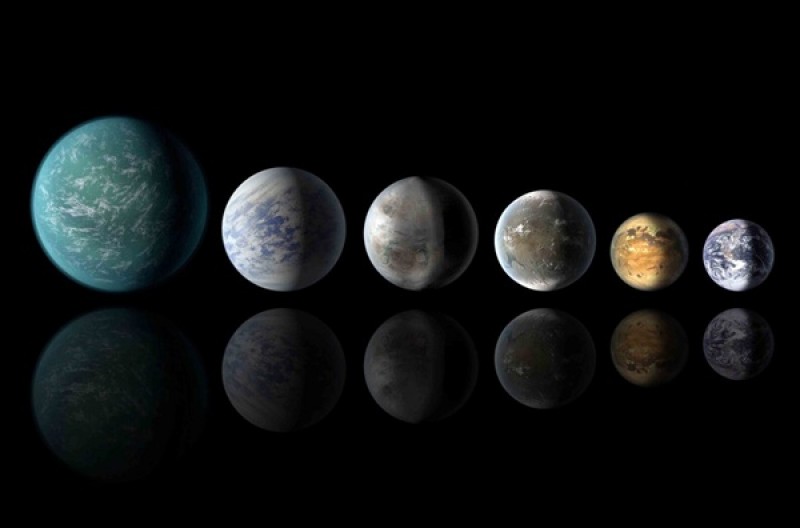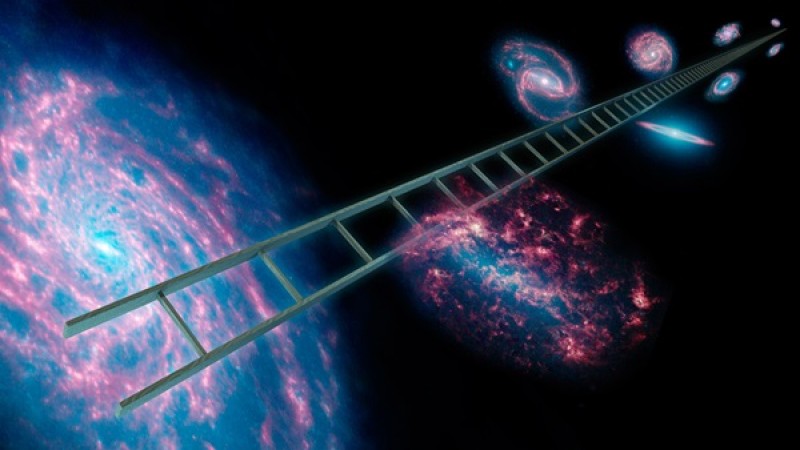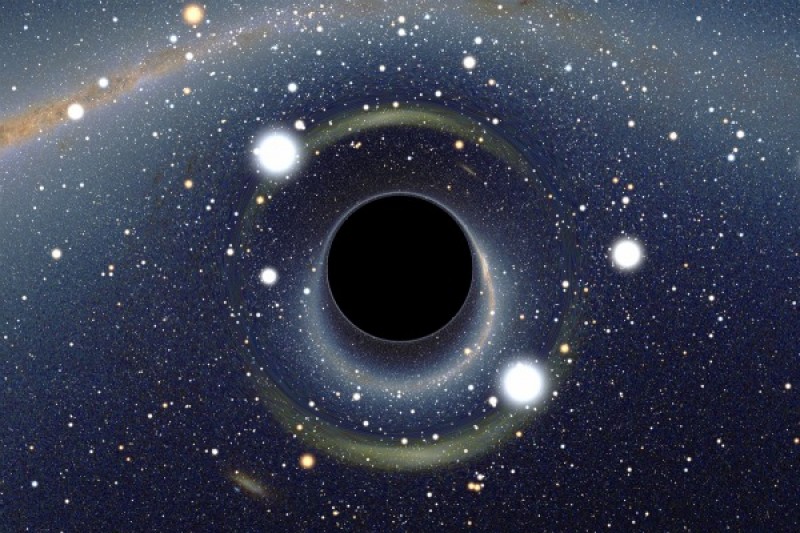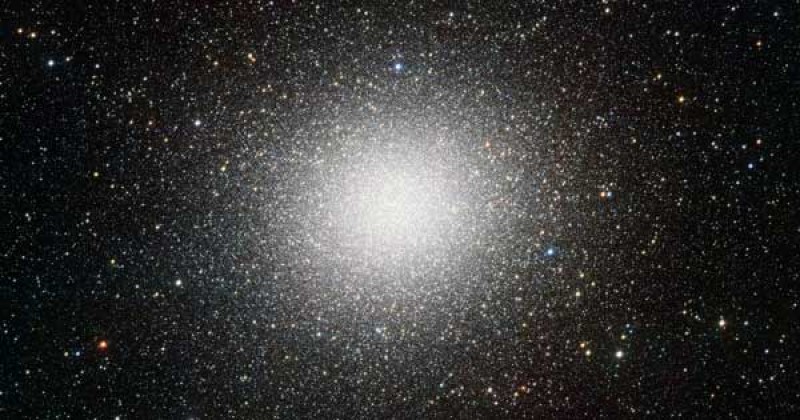Blog
How galaxies and their supermassive black holes grow together
Tuesday, October 15th 2019 04:51 PM
Every massive galaxy likely harbors a supermassive black hole at its center, weighing in at millions or even billions of times the mass of our Sun. Earlier this year, for the first time ever, a team even managed to image the shadow cast by one of these objects on the hot gas and dust around it. But while supermassive black holes are ubiquitous and well studied, the link between these objects and their home galaxies remains mysterious.Now, new research published August 23 in the Monthly Notices of the Royal Astronomical Society is bolstering a simple idea about how these pairs evolve. The authors found that galaxies and their black holes grow together, regardless of where in the universe they are.“The observed relation between the mass of the central supermassive black hole the stellar mass of a galaxy has long been a puzzle,” Thomas Quinn of the University of Washington, a co-author on the new study published, told Astronomy in an email....
Read More
Read More
The oldest discovered cluster of galaxies is revealing the early universe
Monday, September 30th 2019 11:40 PM
Galaxies and dark matter stretch throughout our universe as a vast cosmic web. They cluster together in some areas and leave empty voids in others.But how early in the universe’s history the clusters began to form is still unknown. Now, researchers have found the most distant and earliest example of a galaxy protocluster, a group of galaxies beginning to clump together, about 13 billion light-years away, they report in a new paper that will appear September 30 in The Astrophysical Journal. The rare find may add to astronomers’ understanding of how and when today’s galaxy clusters formed and how galaxies’ surroundings affect their evolution.
“By investigating the protoclusters that are ancestors of the clusters, we can study when and how galaxy clusters form and evolve,” said the study’s lead author, Yuichi Harikane of the National Astronomical Observatory of Japan, in an email.In an effort to understand t...
Read More
Read More
Weirdly giant planet found around tiny star defies expectations
Thursday, September 26th 2019 10:40 PM
The massive planet, which shouldn't exist based on current theories, is prompting astronomers to revisit their models for planetary formation.
The newly discovered planet, named GJ 3512 b, is half the mass of Jupiter. Researchers think its tiny red dwarf host not only likely harbors an additional massive planet, but also ejected another in the past.
NASA/JPL-Caltech
Astronomers have discovered a gigantic planet orbiting a puny star some 30 light-years away. And according to current theories, the planet shouldn’t exist. Dubbed GJ 3512 b, the gas giant is at least half the mass of Jupiter. But it orbits a red dwarf star that’s just one-tenth the mass of our Sun.
"Around such stars there should only be planets the size of the Earth or somewhat more massive Super-Earths," said Christoph Mordasini of the University of Bern in a press release. "GJ 3512 b, however, is … at least one order of magnitude more massive than the...
Read More
Read More
Shredded exomoon may explain weird behavior of Tabby’s Star
Thursday, September 19th 2019 05:41 PM
Tabby's star may have kidnapped an icy “exomoon” from its parent planet and brought it close in, where the world evaporated, creating dust and debris.
An artist’s concept of a ring of dust orbiting Tabby’s Star.
NASA/JPL-Caltech
About four years ago, one star gained notoriety when some astronomers suggested its weird light pattern could be signs of artificial “alien megastructures” blocking the star’s light. Though scientists generally say that clouds of gas and dust are most likely the culprit, the source of that gas and dust remains a mystery.One possibility is that the star, formally called KIC 8462852, kidnapped an icy “exomoon” from its parent planet within the system, researchers reported this week in the journal Monthly Notices of the Royal Astronomical Society. Scientists called these hypothetical escaped moons “ploonets.” And if such a moon was brought close...
Read More
Read More
Astronomers can't agree on galaxies without dark matter
Tuesday, September 10th 2019 06:05 PM
The discovery of two ghostly galaxies devoid of dark matter created quite a stir in the astronomical community. But the jury's still out on what's really going on.
NGC1052-DF2 is a large, but very diffuse galaxy located some 65 million light-years away. This image of the galaxy, which is thought to contain a negligible amount of dark matter, was captured by the Advanced Camera for Surveys on the Hubble Space Telescope.
NASA/ESA/P. van Dokkum (Yale University)
Some 60 million light-years from Earth, not too far from our local galactic neighborhood, a strange little galaxy is causing a cosmic stir. This little island universe holds far fewer stars than your average galaxy. But it's not the lack of stars that's surprising astronomers. The galaxy, nicknamed DF2, also seems to lack any significant amount of dark matter.
Because DF2 would be the very first known galaxy without the mysterious substance, the news of its discovery in 2018 quickly spread...
Read More
Read More
Cosmic collision may reveal how giant stars form
Wednesday, September 4th 2019 04:48 PM
Astronomers have witnessed a rare event: the birth of massive stars 2.73 million light-years away in the Triangulum Galaxy (Messier 33). At the center of two giant colliding gas clouds are some 10 young stars with masses tens of times that of the Sun. Their discovery indicates that such cloud-cloud collisions are a main pathway to creating giant stars in the nearby universe, which could help answer the long-standing question of how big stars form.
Cosmic Collision
High-mass stars — those at least eight times the mass of the Sun — are the celebrities of galaxies. Although they’re relatively rare, they produce most of a galaxy’s visible light. They also strongly influence the environment around them through the radiation they release during their lifetimes and the heavy elements they scatter upon their explosive deaths. Their formation, however, remains debated. New research submitted to the Publications of the Astronomical Society of...
Read More
Read More
Life on alien worlds could be more diverse than on Earth
Tuesday, August 27th 2019 04:35 PM
Earth is the only place in the universe where we know life exists. But with billions of other star systems out there, it might not be the best place for life. In a new study, astronomers modeled the potential for life on other watery planets and found some conditions that can create oceans maximized for habitability.
The model suggests that watery planets with dense atmospheres, continents, and long days — slowly rotating planets that is — were most conducive to life. These conditions stimulate ocean circulation, which brings nutrients from the depths to the surface where it’s available for biologic activity.
“[The research] shows us that conditions on some exoplanets with favorable ocean circulation patterns could be better suited to support life that is more abundant or more active than life on Earth,” Stephanie Olson, a University of Chicago researcher who lead the new study, said in a press release.
To date, over 4,000 exoplanets have been...
Read More
Read More
The cosmic distance ladder: How we measure an infinite universe
Monday, August 5th 2019 04:54 PM
To map the universe, astronomers string together distance measurements to ever-farther objects, like climbing rungs on a cosmic ladder.
The cosmic distance ladder allows astronomers to confidently measure vast distances.
When humans look up at the night sky, they naturally ask the question: How far away is that planet, or that star, or that galaxy? Distance is one of the most fundamental measurements astronomers make, but it’s also one of the most challenging. Fortunately, astronomers have a vital tool to help them answer that central question: how far? That tool is the cosmic distance ladder. This ladder has “rungs” of objects with certain properties that let astronomers confidently measure their distance. Jumping to each subsequent rung relies on methods for measuring objects that are ever farther away, the next step often piggybacking on the previous one. For example, once astronomers measure the distance to a galaxy using one r...
Read More
Read More
What are black holes?
Friday, July 12th 2019 08:29 PM
Black holes are some of the strangest and most fascinating objects in outer space. They're extremely dense, with such strong gravitational attraction that even light cannot escape their grasp if it comes near enough.
Albert Einstein first predicted the existence of black holes in 1916, with his general theory of relativity. The term "black hole" was coined many years later in 1967 by American astonomer John Wheeler. After decades of black holes being known only as theoretical objects, the first physical black hole ever discovered was spotted in 1971.
Then, in 2019 the Event Horizon Telescope (EHT) collaboration released the first image ever recorded of a black hole. The EHT saw the black hole in the center of galaxy M87 while the telescope was examining the event horizon, or the area past which nothing can escape from a black hole. The image maps the sudden loss of photons (particles of light). It also opens up a whole new area of research in black holes, now that astro...
Read More
Read More
Astronomers Find Stars Streaming from Our Galaxy’s Biggest Cluster
Tuesday, April 23rd 2019 06:55 PM
Around the Milky Way are more than 150 globular clusters, ancient star cities with hundreds of thousands of closely packed denizens. Most such clusters can be found out in the galaxy’s nearly empty halo; it’s likely they formed before our galaxy did. But one of these is not like the others.
A view of the iconic Omega Centauri globular cluster.ESO / INAF-VST / OmegaCAM; Acknowledgement: A. Grado, L. Limatola / INAF-Capodimonte Observatory
Omega Centauri (NGC 5139, or Omega Cen for short) is unusually brilliant, massive, and huge: 10 million stars squeeze into a sphere about 150 light-years wide. What most puzzles astronomers, though, is that its stars come in at least three distinct populations, suggesting the cluster came together over billions of years instead of all at once.
Astronomers have long thought this peculiar globular might be something else altogether: the remains of a galaxy that came too close to the Milky Way. Torn apart by our galaxy’s...
Read More
Read More
